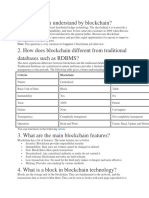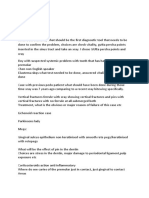0% found this document useful (0 votes)
15 views4 pagesBlockchain Unit 4 10 Mark Answers
The document provides an overview of cryptocurrency and blockchain technology, highlighting their differences from traditional currency and explaining the fundamental structure of blockchain. It discusses key principles of blockchain, types of distributed ledger technology, features and applications of cryptocurrency, as well as the advantages and disadvantages of blockchain in real-world scenarios. Additionally, it covers the basics of cryptography and its types with examples.
Uploaded by
rishank.sharCopyright
© © All Rights Reserved
We take content rights seriously. If you suspect this is your content, claim it here.
Available Formats
Download as PDF, TXT or read online on Scribd
0% found this document useful (0 votes)
15 views4 pagesBlockchain Unit 4 10 Mark Answers
The document provides an overview of cryptocurrency and blockchain technology, highlighting their differences from traditional currency and explaining the fundamental structure of blockchain. It discusses key principles of blockchain, types of distributed ledger technology, features and applications of cryptocurrency, as well as the advantages and disadvantages of blockchain in real-world scenarios. Additionally, it covers the basics of cryptography and its types with examples.
Uploaded by
rishank.sharCopyright
© © All Rights Reserved
We take content rights seriously. If you suspect this is your content, claim it here.
Available Formats
Download as PDF, TXT or read online on Scribd
/ 4




















































































